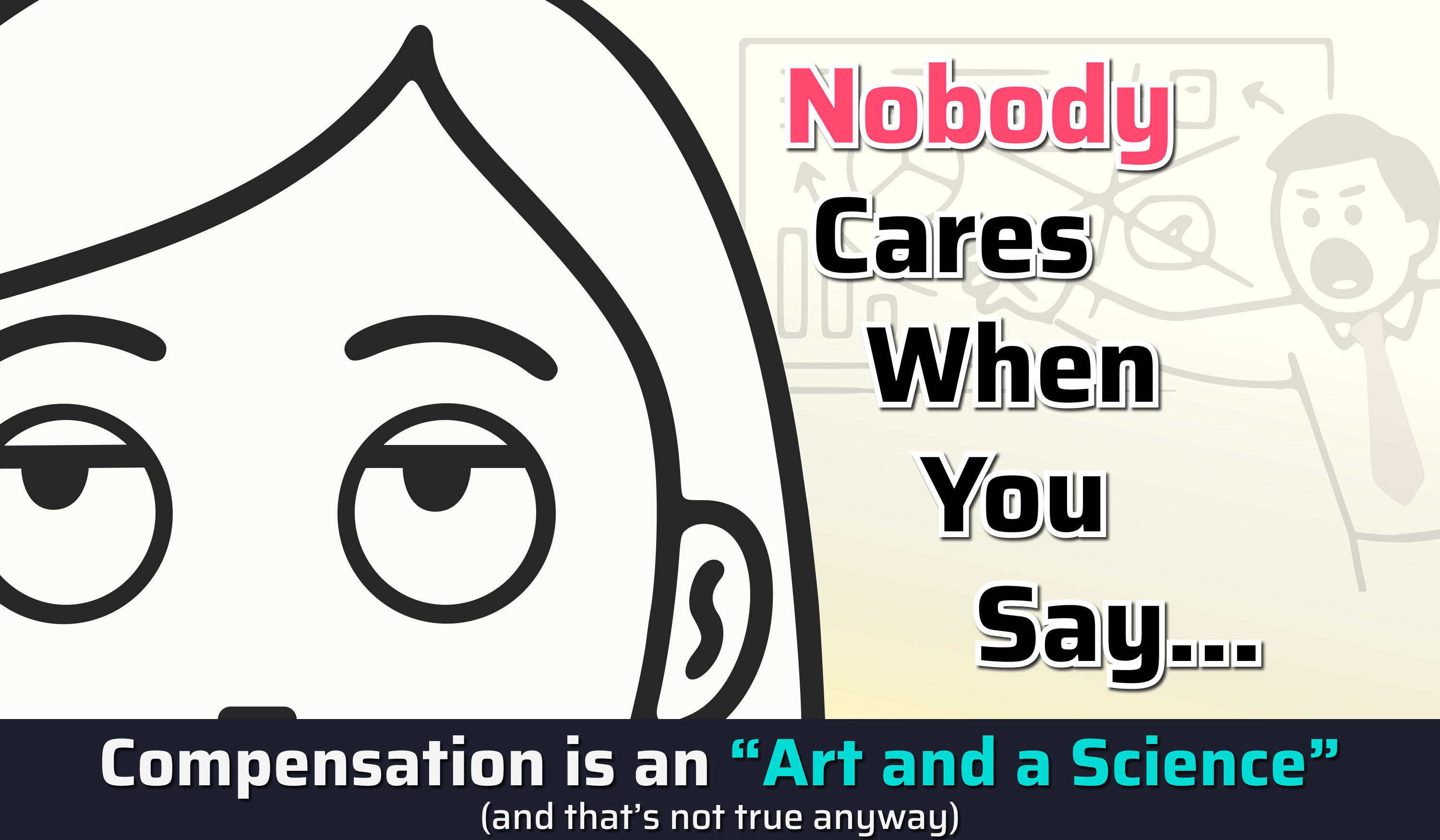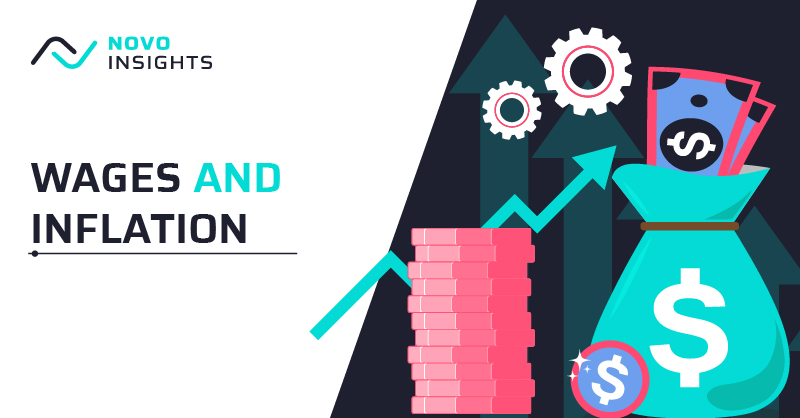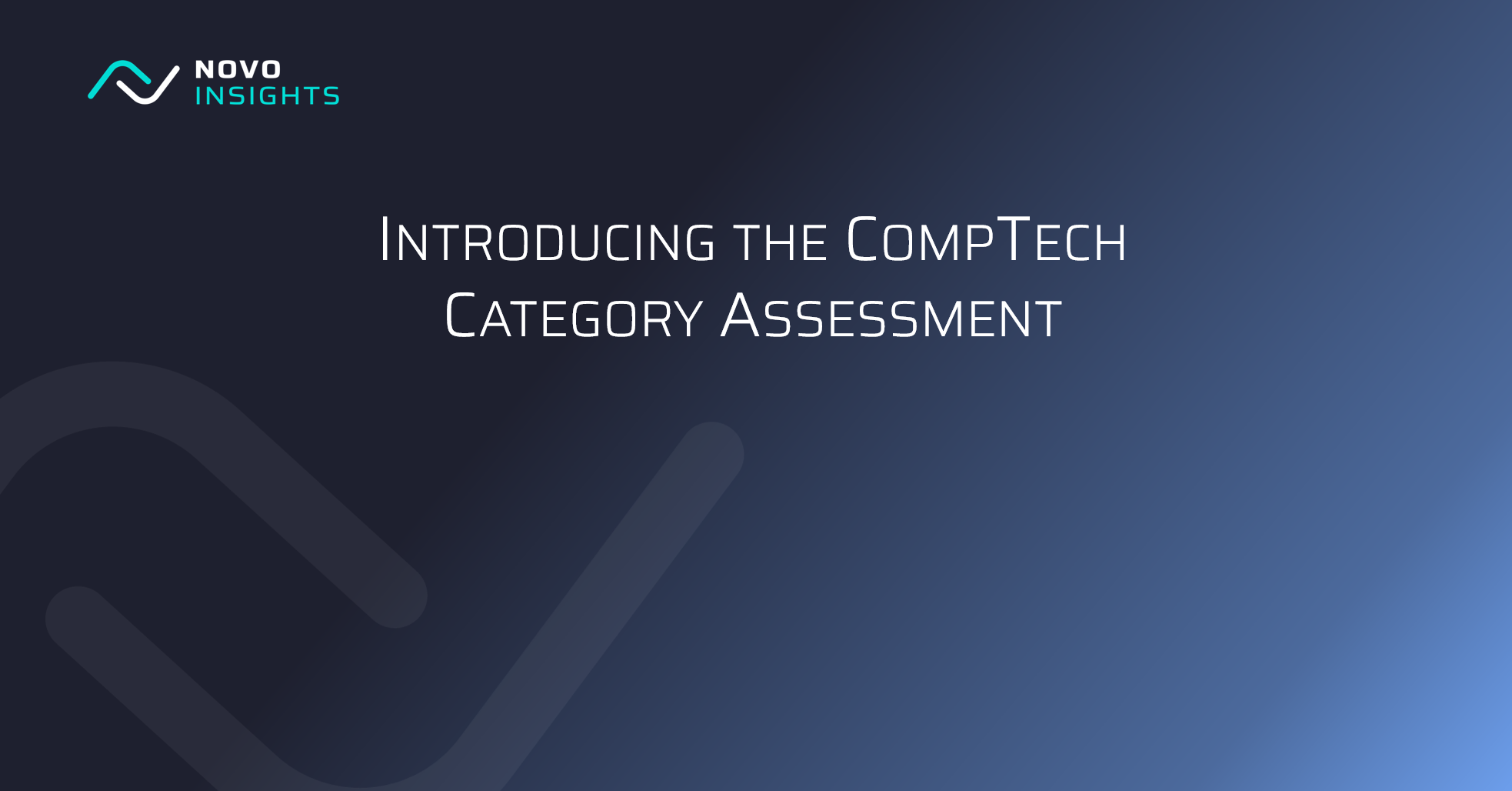Let’s start with a confession: we’ve all said it.
You know the line — “Compensation is both an art and a science.”
It rolls off the tongue so easily. It sounds wise, balanced, sophisticated. It’s the professional equivalent of shrugging and saying, “Well… it’s complicated.”
And it is complicated. But “art and science” has quietly become our industry’s favorite escape hatch. It’s what we say when the data’s incomplete, when the logic’s fuzzy, when we’re trying to protect a decision that doesn’t have clear proof.
Let’s be honest — too often, “art and science” is how we make ourselves feel better about not having a definitive answer or being able to explain our approach.
Why “Art and Science” Fails Us
When we call compensation “an art and a science,” what we’re really saying is:
“We’re doing our best with imperfect information.”
Or
“I am confident this is a best practice, but I can’t really articulate why.”
Fair enough. The danger isn’t the phrase, it’s what happens next.
We start treating “art” as a license for subjectivity. We start trusting gut feel over evidence. We use the phrase to justify what we can’t explain, instead of digging deeper into the facts that could.
That’s when compensation loses credibility.
To leaders, it starts to sound like we’re making things up: pay becomes an opinion and is negotiable.
To employees, it sounds like pay is arbitrary: it’s a small leap from arbitrary to unfair.
To ourselves, it becomes a crutch: an excuse to stop improving how we reason.
Compensation doesn’t need more art and less science. It needs more science.
What Compensation Really Is
Compensation isn’t one science - it’s the convergence of many. If we’re going to do it well, we need to consider each piece of the puzzle instead of hiding behind metaphors.
Let’s break it down.
1. Statistics
Our work lives and dies by data — surveys, regressions, distributions, percentiles. Statistics is the language of evidence. It’s how we separate signal from noise, trend from outlier.
But statistics also humbles us. Because the more you understand the math, the more you realize how fragile the “truth” in compensation really is. Surveys differ. Samples skew. Averages deceive. There’s noise in every number — which means our job isn’t to chase precision, but to communicate uncertainty responsibly, while creating clarity in what’s likely.
2. Psychology
Every pay decision sits at the intersection of perception, motivation, and fairness. Behavioral psychology tells us people don’t just want to be paid fairly — they want to feel fairly paid. They compare, infer, interpret, and react emotionally. A perfectly benchmarked structure can still feel unfair if it’s communicated poorly or violates someone’s sense of equity. What we think should be a great salary increase might still be perceived as inadequate.
If (when?) we just pay robots, then psychology will matter less. But until then, we need to understand that our work ultimately lives in a human exchange – and humans are predictably unpredictable.
3. Economics
Economics gives us the foundation for how the labor market works — supply, demand, elasticity, productivity, and the value of skills in motion. It explains why “the market” isn’t a static benchmark but a living system.
When engineers flood a region, rates flatten. When demand spikes for a new skill, premiums emerge overnight. Compensation is economics in motion — but most of us never study it deeply enough to recognize when our pay models are violating the basic rules of labor flow.
4. Finance
Every pay choice has a cost and an opportunity cost. Pay isn’t just a people issue — it’s a capital allocation issue. That’s where finance comes in: it teaches us to think like investors.
What’s the likely return on that incentive program? How does your merit budget compare to your attrition cost? What’s the ROI of fixing pay equity now versus later?
Finance brings discipline to our generosity. It forces us to justify our recommendations in terms leaders understand — not just “fairness,” but value creation.
5. Organizational Behavior
Finally, the glue that holds it all together: how systems and people actually behave inside organizations.
Organizational behavior explains why structures that look perfect on paper fall apart in practice. It’s what makes “manager discretion” both essential and dangerous. It’s why incentive plans succeed in one culture and fail in another. Or it’s why a design that works today migrates away from its intended course, as well-intended HRBPs and managers find ways to stretch its limits.
Why It Feels Like Art (and Sometimes Even Magic)
When you start blending all those sciences — psychology, statistics, economics, finance, and behavior — it does start to feel like art. Because there’s no single equation that can tell you the “right” answer for all of them at once.
Pay design is full of contradictions:
- Data says one thing, but the business reality says another.
- Market medians move, but talent expectations move faster.
- Equity is both a moral principle and a financial constraint.
Navigating that tension is where the art shows up.
But here’s the key: the art isn’t in ignoring the science — it’s in blending it.
The art is choosing which science to lean on when they conflict. It’s knowing when to privilege fairness over cost, when to trust behavior over benchmarks, when to design for stability versus agility.
That’s not intuition. That’s judgment — informed by multiple disciplines.
What to Care About Instead
Stop caring about sounding wise and hiding behind a dark art. Start caring about being rigorous, being willing to explain your reasoning, and being willing to engage in examination. Our job isn’t to retreat into vagueness—it’s to synthesize those sciences into solutions that can withstand scrutiny.
That means:
- Data over intuition.
- Research over conjecture.
- Evidence over elegance.
This doesn’t strip away creativity. If anything, it demands more of it. Because creativity in comp isn’t making up answers or parroting “best practices” —it’s weaving together incomplete data sets, human complexity, and competing business priorities into something usable, fair, and defensible.
So next time you hear “comp is an art and a science,” call it what it often is: a dodge. Then replace it with something better. Compensation isn’t an art and a science. It’s a blend of sciences - the art is simply how we blend them.




